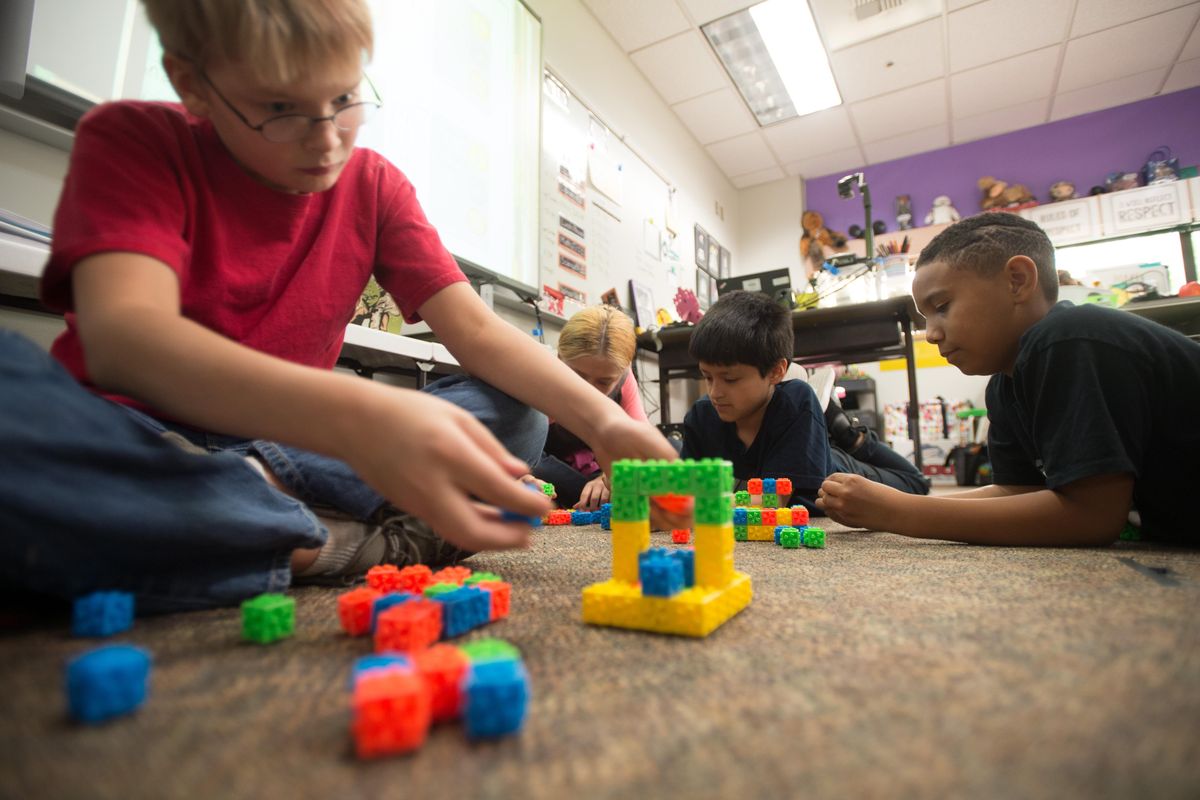With heat and smoke blanketing region Spokane-area schools crank up the AC

With smoke draping the ground and hot, summer conditions persisting well into September, many schools are cranking up the air conditioning this week.
But for those buildings without centralized air conditioning, the weather presents a dilemma. Open the windows to cool the building and unhealthy smoke pours in. Keep the school buttoned up and the temperatures in classrooms begin to rise.
Spokane Public Schools, the state’s second-largest district, has air conditioning in 38 of its 52 buildings. Adams Elementary, at 37th Avenue and Regal Street, is one of the schools without.
Normally, on a warm September day, staff at Adams Elementary would open the windows and doors early in the morning to let cool air into the 107-year-old school, said Principal Beth Nye. With the smoke, that’s not possible. Instead they’ve placed fans throughout the school to increase air flow and keep the lights low when possible. By doing so, Nye said, the school has kept most of the smoky air out of the building.
“We’ve made sure we have water bottles to all of our kiddos and staff members so they can stay hydrated,” Nye said.
Nye said teachers on the top floor often will move their classes to cooler rooms during the heat of the day.
Although she’s not sure of the exact temperature in the classrooms, it feels like it’s in the 80s, she said. Adams is scheduled to get a new HVAC system, as well as windows, in 2020, Nye said.
The 14 buildings without centralized air or heat are older buildings and most of them are slated for remodel, said Greg Forsyth the district’s director of capital projects and planning,
“As we continue to upgrade our schools and facilities … we continue to add air conditioning to those schools,” he said.
Forsyth, who went to school in Spokane and taught at Lewis and Clark High School and Rogers High School, said he never had air conditioning – either as a student or teacher. Between 2000 and 2006 while teaching at Rogers, his “room was on the third floor facing west.”
“Needless to say, it was quite warm,” he said.
But since then, bond money, better air conditioning and insulation technology have led to more and more units in schools.
Additionally, studies have suggested that keeping schools cooler helps students learn, prompting districts to invest in the technology.
According to several studies, the best temperature for a classroom is between 68 and 74 degrees. Nationwide, heating is reported as “unsatisfactory” in 14 percent of permanent public school buildings, according to a 2014 study.
“It does make it harder,” said Jon Swett, the principal of Shaw Middle School. “Our classrooms, especially on the sunny side of the building in the afternoon, they get pretty warm.”
Like Adams, Shaw doesn’t have central air. But they’re used to it, Swett said.
“It’s probably harder on a school whose air conditioning goes down than it is for us,” he said.
Like Adams Elementary, Swett said the inside of Shaw is not smoky because they are keeping the school buttoned up throughout the day.
“Teachers are heroes for me,” he said. “They just make the best of it. Nobody complains.”
Of the 26 schools and buildings in the Central Valley School District, only five do not have central air, said spokeswoman Marla Nunberg. Many of those buildings installed HVAC systems after a 2015 bond funded remodels and construction districtwide.
“We are very thankful to our voters that they passed the 2015 school construction bond to allow us to expand, improve and build new schools with these learning environments in mind,” she said in an email.
All of the buildings in the Cheney School District have air conditioning, said Associate Superintendent Sean Dotson. With the influx of wildfire smoke, he said buildings have been adjusting how much air is let into the building from the outside – per state guidelines.
The Liberty School District’s two buildings both have central cooling, said Superintendent Kyle Rydell.
While the majority of Spokane-area schools may have air conditioning, it’s far less common in other areas.
On Tuesday, Portland-area schools closed two hours early because of the excessive heat. The Oregonian reported the closures were prompted because “only a handful of school buildings are equipped with air conditioning.”